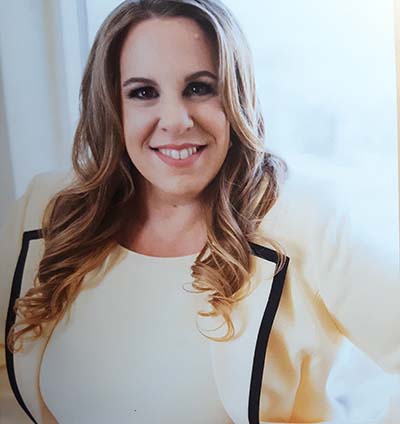Creating a Safe and Accessible Bathroom: Essential Features for Comfort and Functionality
The bathroom is an essential part of any home, but for individuals with limited mobility, it can be a challenging and even dangerous space. Fortunately, with some thoughtful planning, you can create a bathroom that is both aesthetically pleasing and safe for all users. In this post, we’ll explore some of the essential bathroom features for a safe and accessible user experience, including slip resistant flooring, useful and convenient grab bars, handheld showers, barrier-free showers, heated towel racks, adequate lighting, fold-down seats in showers, bidets, and even height-adjustable wheelchair accessible sinks.
According to the Centers for Disease Control and Prevention (CDC), falls are the leading cause of non-fatal injuries among older adults, with one out of every four individuals aged 65 or older falling each year. Of those falls, more than half occur in the home and nearly one-third happen in bathrooms. I have included some common and strategies to creating a safer and more comfortable bathroom experience.
Barrier-free Showers:
Barrier-free showers are an excellent solution for wheelchair users and other individuals with limited mobility who may need assistance showering. These showers remove any lip or threshold to enter or exit the shower, which makes it more accessible. The shower drain is incorporated into the bathroom floor and sloped, much like European designs.
Slip Resistant Flooring:
As a strategy to reduce bathroom falls, focusing on flooring and implementing slip-resistant products can be highly effective. It’s recommended to install textured tiles or slip-resistant flooring in the bathroom. These types of flooring provide more traction underfoot, reducing the chance of slipping. Equally important is the maintenance of these surfaces; regular cleaning can prevent the buildup of slippery substances such as soap or shampoo.
Useful and Convenient Grab Bars:
Grab bars are essential for safe assistance when getting in and out of bathtubs and showers, and near the toilet. With newer designs, they can also be aesthetically pleasing and have other functions. Consider horizontal grab bars that double as towel racks, toilet paper holders, or even magazine racks. Vertical grab bars installed near the toilet can also support standing and sitting actions. A professional occupational therapist who is also a contractor and product expert can ensure the optimal locations and design for your specific needs.
Barrier-free Showers:
Barrier-free showers are an excellent solution for wheelchair users and other individuals with limited mobility who may need assistance showering. These showers remove any lip or threshold to enter or exit the shower, which makes it more accessible. The shower drain is incorporated into the bathroom floor and sloped, much like European designs.
Fold-down Seats in Showers:
A fold-down seat is an essential feature for a safe and accessible shower. They provide a safe and comfortable place to sit while showering, combine well with the hand held shower use, while also freeing up space when not in use.
Handheld Showers:
Handheld showers can help individuals with limited mobility and their caregivers assist with bathing and cleaning. They provide more control over the water flow and direction and reduce the risk of accidents. If your bathroom doesn’t currently have a handheld showerhead, talk to a professional about installing one.
Heated Towel Racks and Heated Floors:
Heated towel racks and floors are luxury bathroom features that also have practical benefits. Heated towel racks can help to warm towels and robes, which can be a comfort for individuals who are sensitive to temperature changes, while underfloor heating systems can help to keep bathroom floors warm, dry the floors quickly after use and prevent slips and falls.
Adequate Lighting:
Proper lighting is essential in the bathroom. You will need bright lighting for the sink and mirror, while softer lighting can create an ambiance for relaxation in the bathtub or shower area. Sensor lights can also be added to the bedroom, hallway and/or bathroom for evening trips to the toilet. Ensure all areas are safe with adequate lighting.
Bidets:
Bidets are an excellent feature for individuals with limited mobility, who may find it difficult to clean themselves after using the toilet. Bidets can help to promote personal hygiene and improve the user’s quality of life.
Even Height-Adjustable Wheelchair Accessible Sinks:
Accessible sinks that are installed in an ergonomic location with space underneath can help people in wheelchairs to access the sink with ease and maintain their independence. Height-adjustable sinks also provide solutions for individuals of different heights and capabilities.
By incorporating thoughtful design, quality materials, and professional advice, you can create a safe and accessible bathroom that ticks all the boxes for functionality and comfort without compromising your taste or style. Expert advice and consultation from our occupational therapist who is not only experienced in the field of home health, home safety, and accessibility but also a contractor and product expert can ensure that every bathroom feature is tailored to meet your specific needs. Contact us at Safe Accessible Home today to schedule your free discovery call and start planning your bathroom remodel.
Feel Free to contact me through my website for a free discovery call to see how I can support you in creating a safe and accessible home.
Ryan Salmon
www.safeaccessiblehome.com
Originally Published on https://www.safeaccessiblehome.com/blogs/
























